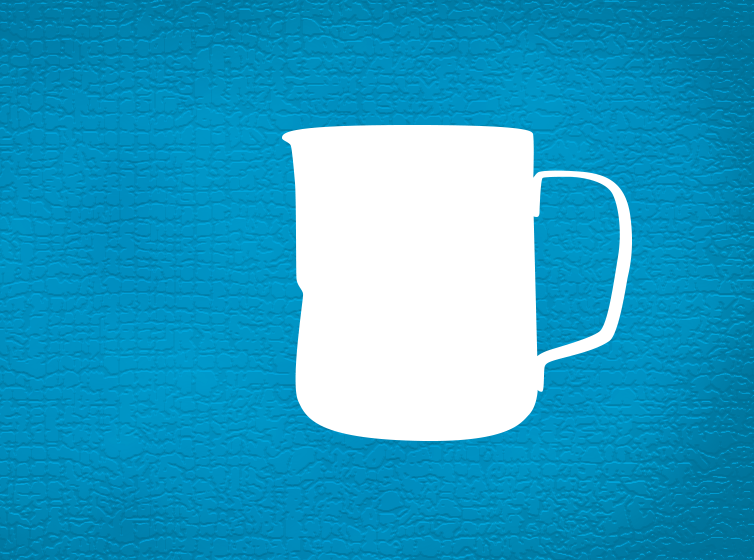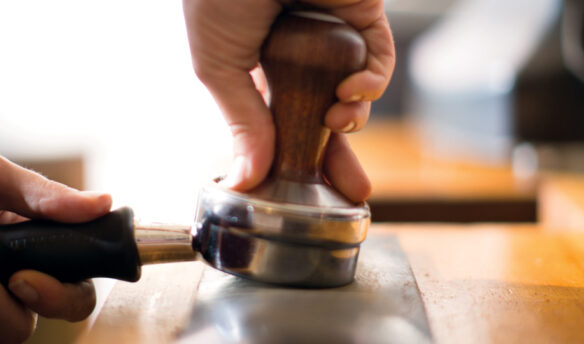[W]hen a customer orders a latte from a café, they’re asking for two ingredients to be combined in a single vessel: espresso and freshly steamed milk. Well-steamed milk (with microfoam evenly distributed throughout) is what can take a latte from passable to excellent, but it’s a nuanced and multistepped process.
First—and this step must never be skipped for any reason—purge the steam wand into a damp towel or drip tray before beginning. Then, start with cold milk in a clean pitcher. Pour enough milk so that the pitcher is 1/3 to 1/2 full. Use a pitcher roughly one size larger than the drink you’re preparing. For example, use a 12-ounce pitcher when preparing milk for an 8-ounce beverage. This allows room for the milk to swirl and aerate, and ensures the volume of milk will be deep enough to properly submerge the steam wand.
Submerge the end of the wand into the milk, just below the surface of the milk. I use the line where the tip of the steam wand screws on to the end of the wand as a guide, lining it up with the surface of the milk. You’re ready to steam!
Turn on the steam wand to full pressure. Immediately lower the pitcher slightly to aerate the milk, allowing the steam tip to rest at the surface of the milk, creating a frothing noise. This noise is your indicator that you are producing foam. It shouldn’t be terribly loud, and definitely not screaming, just the intermittent sound of air escaping from the milk.
When aeration begins, you want to begin making a whirlpool in the pitcher. This ensures controlled, even heating as the spinning motion breaks large bubbles caused by aeration into tiny bubbles called microfoam. When milk isn’t swirling, it often rolls over itself, which can lead to hot milk shooting out of the pitcher—both messy and dangerous.
As the milk swirls, bring your other hand down (the one that turned on the steam wand) and press it against the pitcher to feel the temperature of the milk. Aeration must be completed before 100 degrees Fahrenheit (bubbles caused by aeration beyond this point may not have time to get broken down by the whirlpool). That’s the moment you just start to feel warmth on your hand. Once the milk reaches this temperature (“barely warm to the touch”) you are done aerating and ready to move on to the next phase.
Submerge the end of the steam wand so it’s beneath the surface of the milk, but not touching the walls or the bottom of the pitcher. Now you’ll heat the milk to its final temperature (between 120 to 150 degrees, depending on the beverage and the best practices set by your café). At this temperature, the milk will be too hot to hold your hand against, but not so hot that you can’t lightly touch the side of the pitcher.
You may need to adjust the angle of the pitcher to encourage the milk to spin in a whirlpool-like motion. In this way, you’ll whip the textured foam from the surface throughout the entire pitcher. When the milk becomes too hot to hold on to, turn off the steam pressure. Set the milk on the counter, wipe the steam wand off using a dedicated (damp) steam wand towel, and purge the wand one last time.
There may be a few large bubbles on the surface of your milk—a couple gentle taps of the pitcher on the counter should pop these. Give the milk a swirl or two, and you’re ready to pour it into your cup and make a customer’s latte dreams come true!
—Nathanael May is the director of coffee and green coffee buyer for Portland Roasting Coffee.
















